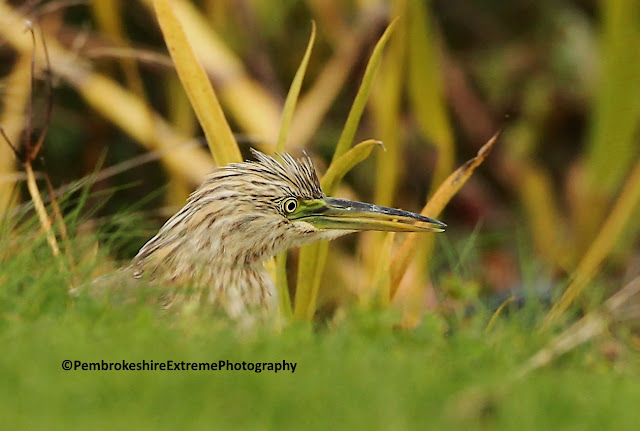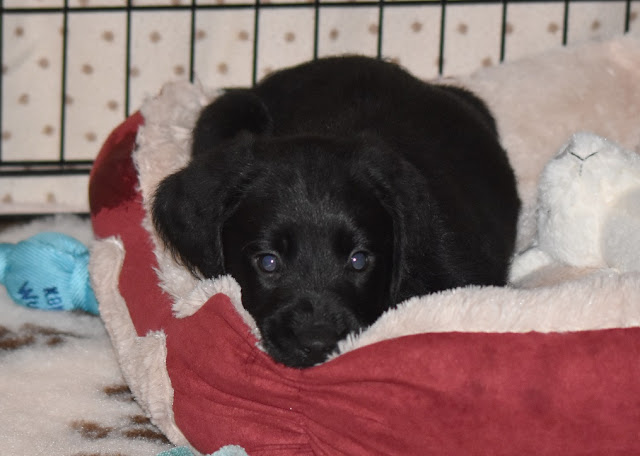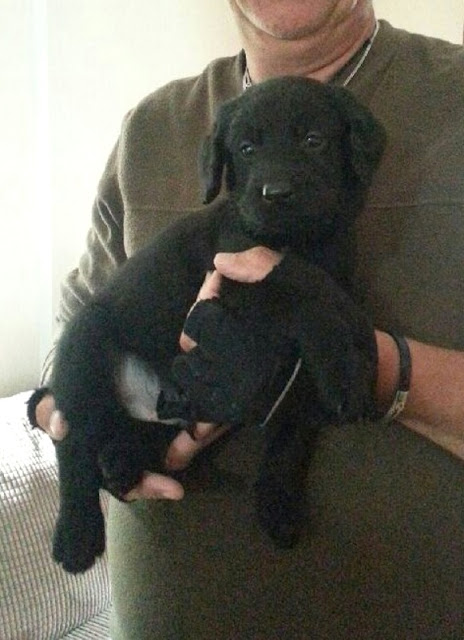The Safari signed up to the Patchwork Challenge again this year but after not doing it last year we haven't got a 'Comparative' score.
We're not doing too badly currently (September table) lying in 18th place but only added one species, Short Eared Owl, for the whole of October to bring the 100 up, so with all the good stuff around elsewhere in the country we're likely to suffer a bit of a dip. It's not life or death though (unlike the family stuff we've got going on at the mo) and does make you look/listen at/to every bird you come across and encourages participation in Citizen Science through the magnificent BirdTrack.
All we ask is we try to keep up with young Findlay Wilde who is a few places ahead of us having seen several more species on his patch but who has a far worse 'PPB - Point's per Bird' suggesting the quality of birds at the nature reserve is pretty good! In fact if the table was based on PPB we'd be a little higher at 14th, where Finn is now. All to play for and all good fun.
For Patch 2, in the 'Coastal North' league, we're not going so well languishing near the foot of the table with only 75 species seen but again if it was based on PPB we'd be a little higher at 16th rather than 32nd and the quality of birds on Patch 2 is actually a little better than at the nature reserve! It'll be even better for our October score as we found that Yellow Browed Warbler and gained ourselves 3 'bonus' points. If only we could have found one on one of our very infrequent visits to the nature reserve too - as far as we're aware the species still hasn't been recorded there - but we could be wrong.
Today is the debate in Parliament about driven grouse shooting. Will our elected representatives listen to science, evidence and reason or be swayed by the big money and the Establishment? For the sake of the future of our uplands we hope the former but fear they will pay more heed to the latter and little will be done to protect our uplands from the illegal activities, wanton vandalism and ecocide that is currently being carried out in the name of 'sport'. We are very much saddened by the amount of 'legal' killing of Mountain Hares, Stoats, Weasels, Foxes, Badgers, Crows, Magpies and of course the by-catch that ends up in their snares and traps. The mammals should be afforded the same protection in law as the birds - why shouldn't they? The reason they don't is probably that at the time the law-makers were the hunting, shooting fishing land-owning brigade, so while it was OK to protect a Yellowhammer or a Blackbird it wasn't OK to protect a Stoat or a Weasel or a Pine Marten...don't forget it was sometime after all the other bird species that Sparrowhawks became protected. But this isn't about us v them or plebs v the landed gentry it's about what's right, moral, ethical and for the greater good in the 21st Century. Going to be a long hard fight to get those who are still firmly in the 19th C mindset of hookybeak and claw = vermin to change their ecologically illiterate views particularly as even more money is at stake with super-wealthy Asians and others apparently being invited to join grouse shoots.
Our uplands should be green, verdant, biodiverse places clothed in stunted, twisted (mainly) Sessile Oak, Rowan and Silver Birch trees and Hawthorn, Gorse and Juniper scrub clinging to steep hillsides, the trees themselves bedecked in a myriad species of mosses, lichens and liverworts and an understorey of (some) Heather, Bilberry and Bracken with Pied Flycatchers, Redstarts and Tree Pipits singing from their branches. The boggy areas too wet for trees ought to be active water retaining, carbon storing peat-bogs echoing to the alarm calls of wading birds dodging the Hen Harriers and Peregrines that have sadly been extirpated in recent years in the Safari's nearest uplands. The only Hen Harrier you'll see in the Forest of Bowland Area of Outstanding (un)Natural (not very) Beauty(ful) is printed on the roadside boundary signs - what a shame - - no it's despicable actually!!!
On our recent trip to Sardinia we had a glimpse of what British uplands might have once looked like and should look like again, although with the caveat that the two climates are very different.. Even these Sardinian uplands are much modified by man and lacking in large mammalian predators but they are so much more attractive and biodiverse than our own where wildlife is almost non-existent bar a few Meadow Pipits, far too many Red Grouse, too much Heather, and a lot of Purple Moor Grass and Bracken.
But the Sardinian upland forests are also productive, for those that like killing things a sustainable harvest of Wild Boar provided quality sausages and hearty casseroles (yummmmm), there were sheep too who's milk was made into a plethora of artisan delicious sheep's cheeses, the flavour and succulence their lamb was far superior to ours too - probably because the sheep had a much wider diet of all manner of grasses and herbs. The trees themselves provided sustainable coppice products and firewood. There's no reason why some ((most) of our uplands couldn't be like that once more as names like Wolf Fell, Wolfhole Crag, Wild Boar Clough suggest.
If the killers really want to kill something why don't they at least do some good by killing (and very preferably eating too) the aliens such as Canada Geese, Grey Lag Geese, Muntjac Deer, Sika Deer (OK they were featured on Autumnwatch but it they really ought to have been native Red Deer in those woods) even Grey Squirrels! At least then their blood-lust would actually have some conservation benefits unlike burning to death hundreds of hibernating Common Lizards, Adders, Hedgehogs, sapling trees that have escaped the nibbling teeth of sheep, all those countless species of invertebrates the ecosystem needs to survive and of course the 'lesser' plants the mosses lichens and liverworts.
Wouldn't it be good - but don't hold your breath those vested interests and well heeled aren't going to give up their 'fun' at the drop of a hat.
Today Patch 2 it was very misty and we didn't see much, top of not a lot were a Grey Wagtail and six Red Throated Divers one of which was reasonably close, ie less than half a mile!
Where to next? More Patch 2 stuff, could do with some decent vis-mig or better still a bit of a fall.
In the meantime let us know who's committing all the environmental vandalism and ecocide in your outback.
On our recent trip to Sardinia we had a glimpse of what British uplands might have once looked like and should look like again, although with the caveat that the two climates are very different.. Even these Sardinian uplands are much modified by man and lacking in large mammalian predators but they are so much more attractive and biodiverse than our own where wildlife is almost non-existent bar a few Meadow Pipits, far too many Red Grouse, too much Heather, and a lot of Purple Moor Grass and Bracken.
But the Sardinian upland forests are also productive, for those that like killing things a sustainable harvest of Wild Boar provided quality sausages and hearty casseroles (yummmmm), there were sheep too who's milk was made into a plethora of artisan delicious sheep's cheeses, the flavour and succulence their lamb was far superior to ours too - probably because the sheep had a much wider diet of all manner of grasses and herbs. The trees themselves provided sustainable coppice products and firewood. There's no reason why some ((most) of our uplands couldn't be like that once more as names like Wolf Fell, Wolfhole Crag, Wild Boar Clough suggest.
If the killers really want to kill something why don't they at least do some good by killing (and very preferably eating too) the aliens such as Canada Geese, Grey Lag Geese, Muntjac Deer, Sika Deer (OK they were featured on Autumnwatch but it they really ought to have been native Red Deer in those woods) even Grey Squirrels! At least then their blood-lust would actually have some conservation benefits unlike burning to death hundreds of hibernating Common Lizards, Adders, Hedgehogs, sapling trees that have escaped the nibbling teeth of sheep, all those countless species of invertebrates the ecosystem needs to survive and of course the 'lesser' plants the mosses lichens and liverworts.
 |
| Good grief a hill with trees on it - who'd have thunk it and a thriving village too |
Today Patch 2 it was very misty and we didn't see much, top of not a lot were a Grey Wagtail and six Red Throated Divers one of which was reasonably close, ie less than half a mile!
Where to next? More Patch 2 stuff, could do with some decent vis-mig or better still a bit of a fall.
In the meantime let us know who's committing all the environmental vandalism and ecocide in your outback.



























































